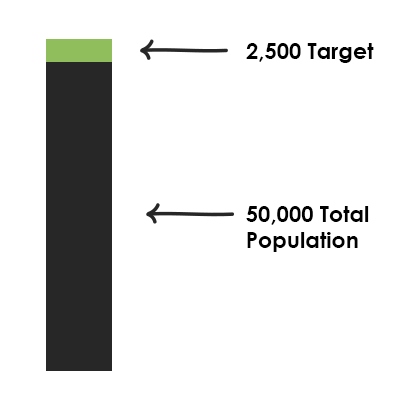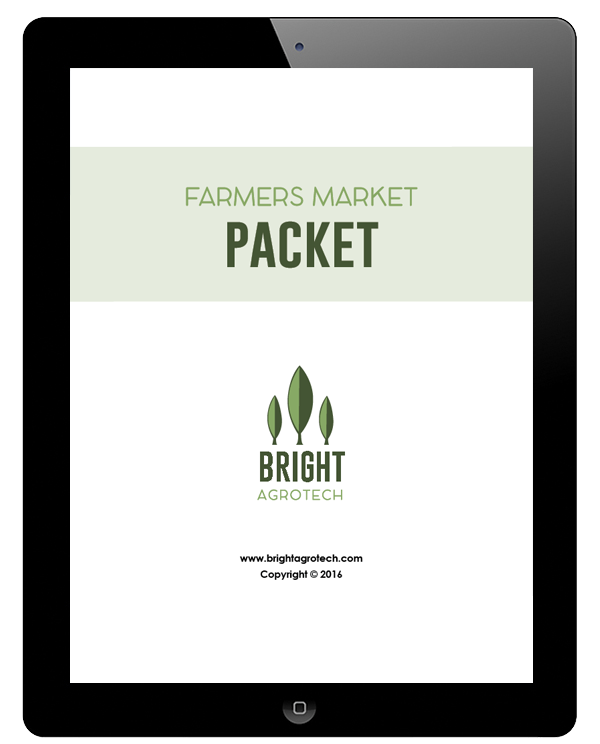Market research matters for local farmers
Many new farmers make the mistake of planning their facility and learning to growm but neglecting a factor that defines the success of their farm: demand!
As a small farmer, one of your greatest advantages is your ability to satisfy demand in a local, personal way. As Chris Michael says,
“The whole reason youre building a vertical farm is to grow crops closer to market and meet the demand for fresher food. If demand doesnt exist, then Poof! There goes your business feasibility.”
To identify that demand, new farmers research their markets.
In this post, we’re going to overview both types of research and how to get started.
Outline the “big picture”: demographic info
Start with the “big picture” by getting information on the population of your area. You can access this information at the US Census.
Once you have information on population size, you can make some quick assumptions on your potential market size.
 For example, if you live in a town of 50,000 people, you can assume that only half of them eat vegetables regularly.Ten percent of that is what you can target.
For example, if you live in a town of 50,000 people, you can assume that only half of them eat vegetables regularly.Ten percent of that is what you can target.
You end up with 2,500 people in your initial customer base for the city.
The next step is asking, “where are those 2,500 people getting their produce?” Once you know the produce sources for those people, that’s where the next step of your market research is going to take place.
Study the small picture with interviews and canvassing
- How many customers does the market serve on a daily basis?
- What is the average purchase size?
- What are the most popular products?
There’s no such thing as too much information here (unless it annoys the source of the information).
![]() Be respectful of people’s time! They have busy lives, so pay them back for their time by being courteous, bringing samples, buying them a meal, and of course providing them with incredible produce.
Be respectful of people’s time! They have busy lives, so pay them back for their time by being courteous, bringing samples, buying them a meal, and of course providing them with incredible produce.
Why go after this information? Because as a upstart farmer, you’re in the perfect position to meet those desires. You can offer about ten things that the big guys cannot.
Use of the live sales model allows you to address the concerns of customers looking for a change.(Learn more about the live sales model here.)
- What does my ideal customer group want to see? Something local, organic, cheap?
- What is the mainpriority of my customers?
- What are my customersunhappy about that I can solve for them?
- What thought processes do my customers use to buy?

How do you get that information? By using an age-old technique called canvassing. Odds are that you’ve done it before. Maybe it totally freaks you out. If so, then just remember that you’re in charge here. You get to decide the best way to do it, and there’s not a supervisor watching over your shoulder. Take your time, and do it your way.
Take down information in a way that makes it easy for you to use. Maybe this means going out with a clipboard and a pen, or maybe it means using a tablet. You could even try leaving a comment box if the market manager is willing to coordinate with you on that.

This is going to be important information not just for the present but also for the future and for other parts of your business as you decide on marketing strategies, content, and how to emphasize the benefits of your produce.
Line up your market options with your production
“I would balance info from other Upstart Farmers with information from my local market. You can start by looking at prices in the produce aisle, at the farmers’ market, or for area CSAs.
Know that the industry margin is usually 50%, so you can derive wholesale pricing from there. There’s also no substitute for actually talking to potential customers and asking what they would pay for your products or if a certain price would be fair.”
Remember that your goal is not to compete on cost with the rest of the market. Your produce is completely different from the produce shipped in from California and Mexico.
You won’t be able to compete with them on costs (they’re mass-producing). You will be able to out-perform in quality, transparency, and other benefits. Your pricing strategy shoudl reflect this!
3) Cost of serving the market. Some markets are more costly for you to serve than others. Note the cost of time and labor that you put into the market, including deliveries, maintenance of displays, etc.
4) Supply and demand. Can you supply a signification portion of the demand for this market? And can the market absorb a significant portion of your production? If you only function in a very small portion of the market or if the market only functions in a very small portion of your operation, then it might not be worth the cost of serving.
Get out there!
Want to become an Upstart Farmer?
Check out Upstart University, the online training program to learning everything you need to become an Upstart Farmer. Courses made of videos, written content, quizzes, and assignments are designed to empower and equip you.
For $10 a month (redeemable at purchase), aspiring farmers have nothing to lose. Register now.








